Our safety as women is a big deal. A huge deal. When we feel safe — emotionally, physically and mentally — we can function at our best and step into our lives with full engagement. Any level of fear in these arenas, however — whether we feel just uncertain about our safety or fully and utterly compromised — affects our capacity to function as whole, thriving people. That’s why we wanted to start a discussion on some of the ways in which we can (and should) guard ourselves.
Welcome to the “Guarded” series.
The truth is, whatever we do, none of us can be sure that we will never be hurt, but in starting this series we want to say that we hear you; being a woman today has a lot of difficulties and we can feel vulnerable. But we don’t have to stop there or freeze in fear. With the Guarded series we’re going to approach various ways we can put up appropriate boundaries in our mental, emotional and physical lives, culminating with a special article in our summer print issue.
Darling Media isn’t just about talking to you; but it’s our goal to equip you as we talk about real, relevant issues that we each face every day. Let’s keep talking. We’d love to hear from you about any resources or feedback that you have.
Brazilian Jiu-Jitsu is a form of martial arts centered on the idea that a smaller, weaker opponent can successfully defend themselves against a larger, stronger attacker. In our first Guarded post, we’re sharing a few of the most powerful submission techniques to aid you in a worst-case scenario as demonstrated by Brown Belt Lila Smadja and Purple Belt Dawna Gonzales of 10th Planet Jiu Jitsu.
When asked why Jiu-Jitsu can be such a beneficial practice for women, here’s what Lila and Dawna had to say:
Lila: “All sports and martial arts are great, but Jiu-Jitsu really empowers women. I am only 5’3”, so I did not imagine this is something I could be good at because I could never be strong enough. It’s not true. It’s technique, it’s skill, and yeah strength helps for sure, but it’s really about the technique of Jiu-Jitsu and developing body awareness.
…I also want to say that Jiu-Jitsu is good for women who have children. If you’re in the street and a situation arises where someone tries to kidnap or attack your child, what are you going do? Jiu-Jitsu is good for moms who do not want to feel powerless.”
Dawna: “Jiu-Jitsu is the only combat sport you can spar at 100% with people of different sizes and apply the skills you are learning 100% without severely damaging your opponent. One of the many gifts Jiu-Jitsu gives you is the ability to stay calm and think through the process that you need to go through in a high stress, high intensity, adrenaline fight-or-flight situation.
The unfortunate fact is that [attackers] don’t box, they wrestle. So even if you are the top-trained kickboxer in the world, I doubt that if anybody were to attack you they would square-up with you. That’s just not how it works.”
Study the below in detail, where Lila and Dawna walk us through the best escape moves to know in a high-stakes situation.
Move No. 1: The Double Arm Bar
To begin the set-up for the Double Arm Bar from your back.
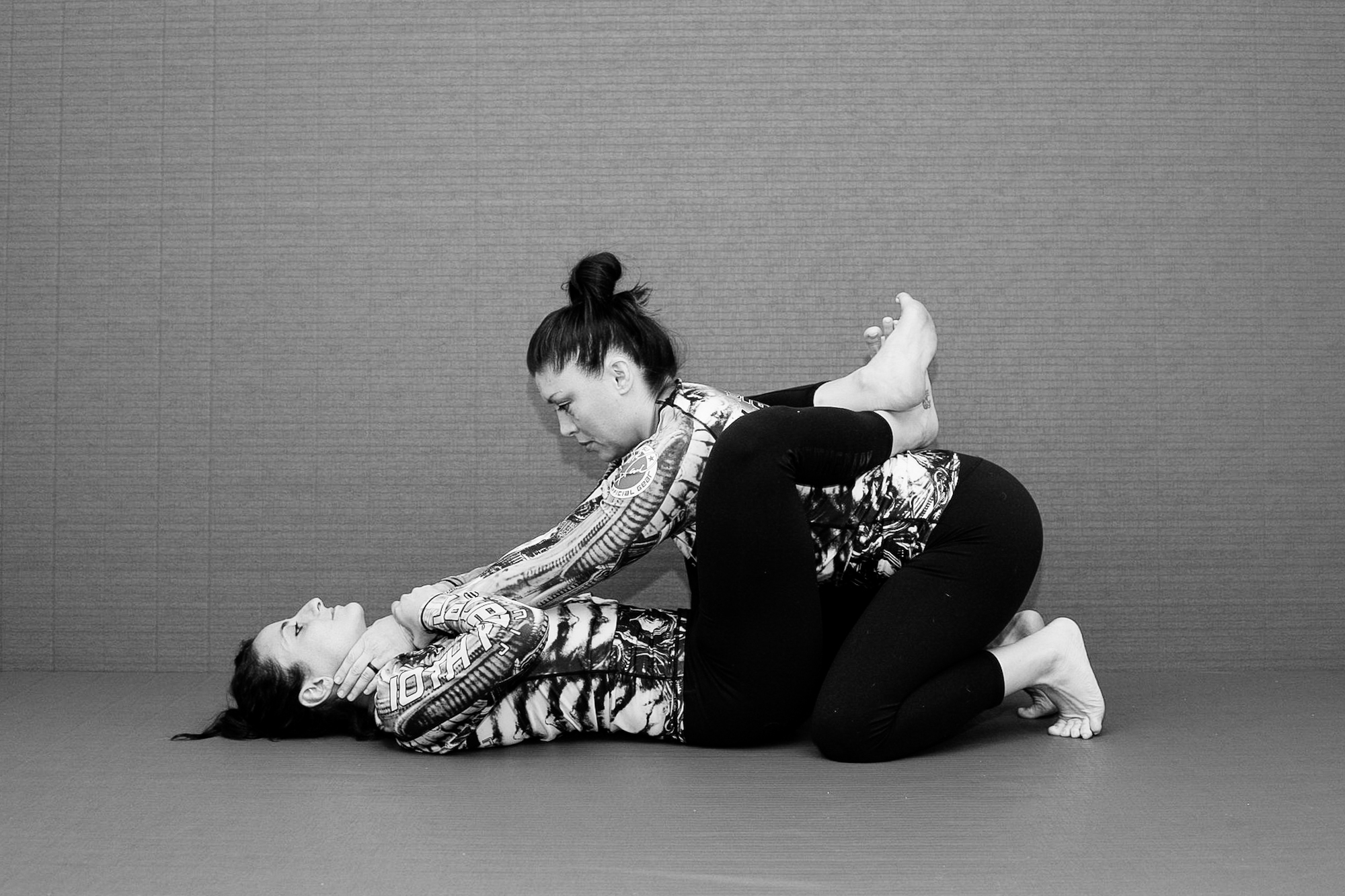
Step 1: Establish double wrist control helping relieve the pressure of opponent’s open hand choke while simultaneously crossing your legs across the back of your opponent establishing pressure with your knees focused on the ribs of your opponent.
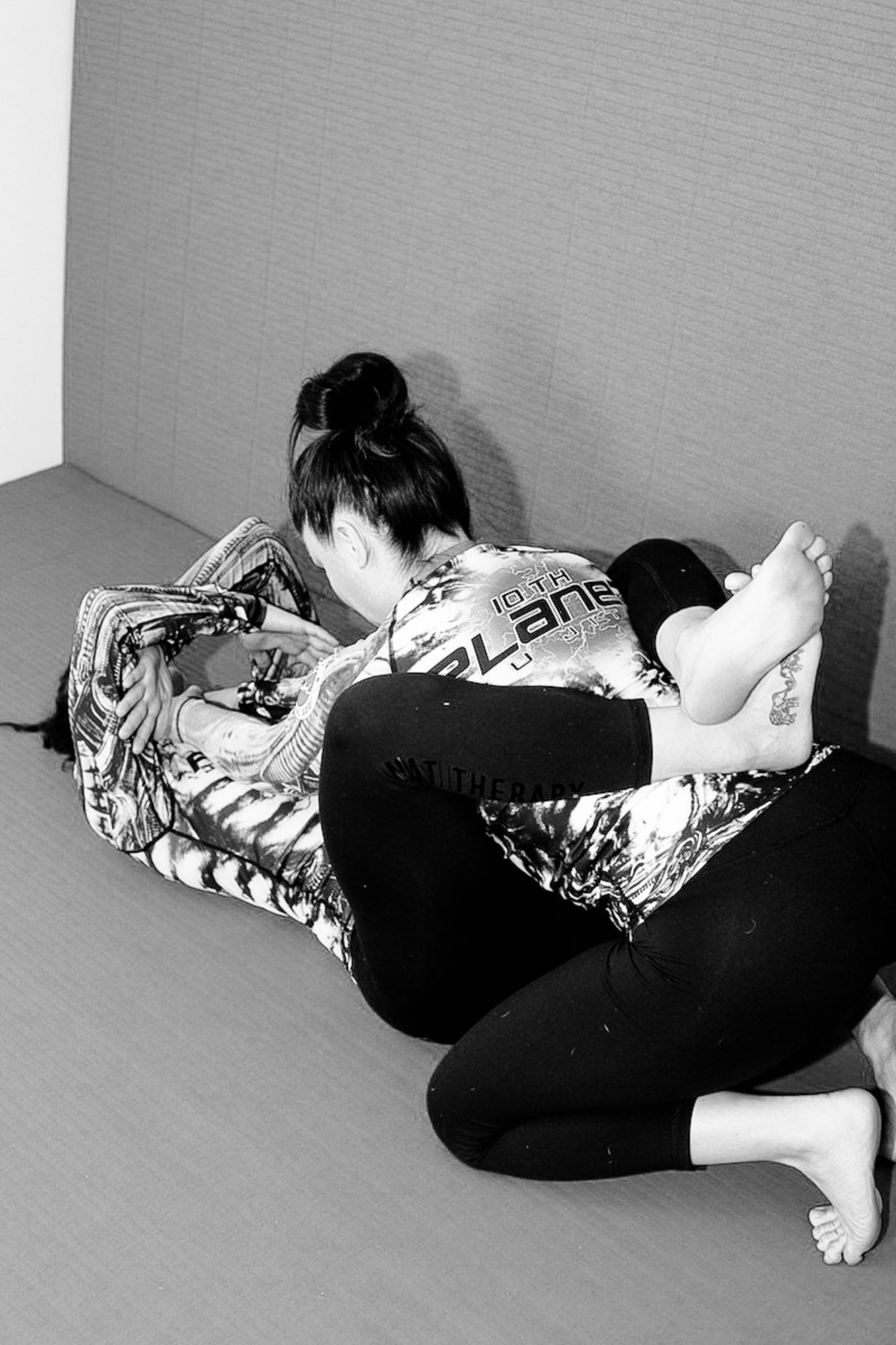
Step 2: While maintaining inward pressure with your legs keeping your feet crossed on your opponent’s back, you will establish cross grips moving your hands from your opponent’s wrist to the opposite forearm while using downward pressure to simultaneously brake your opponent’s choke attempt while securing control of both of their arms.
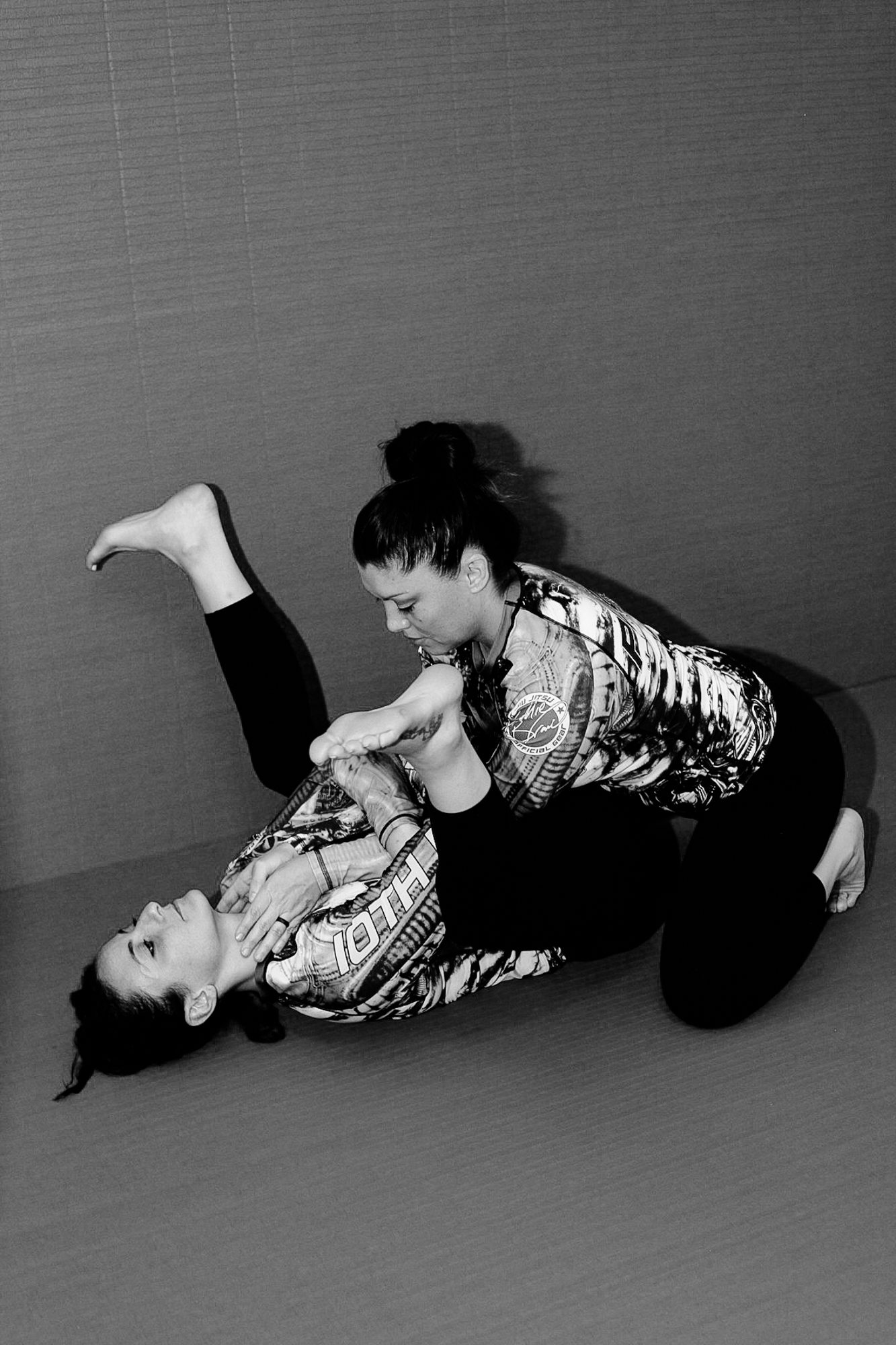
Step 3: Continuing to trap your opponent’s forearms, uncross your legs clearing your opponent’s shoulder line with your legs.
Step 4: Once your legs have cleared the shoulder line of your opponent, re-establish your guard by crossing your ankles behind your opponent’s neck keeping strong inward knee pressure compressing your opponent’s upper arms and shoulders together.
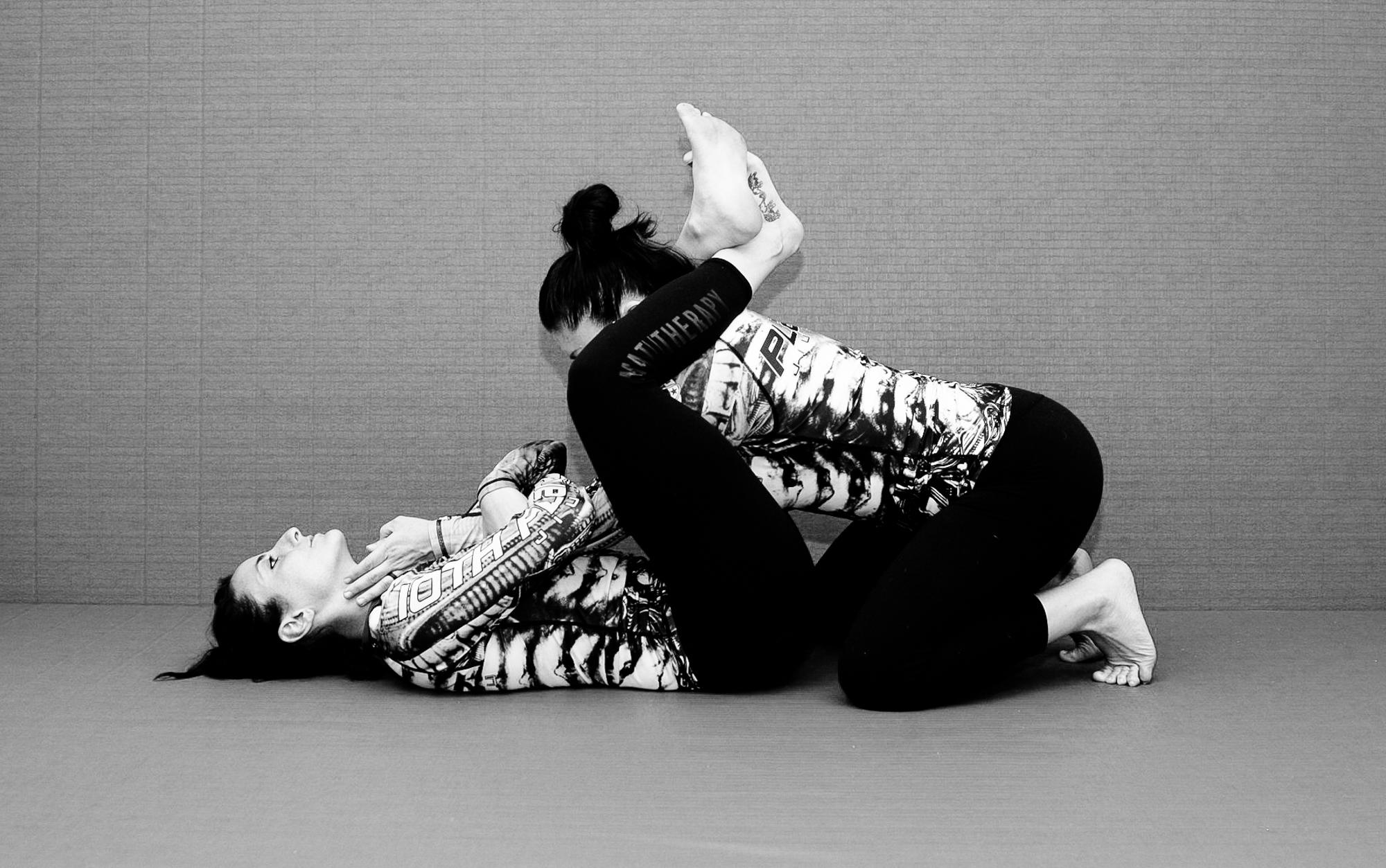
Step 5: To begin to apply the Double Armbar, maintain strong knee pressure, pinching your knees together while you begin to raise your hips off the ground, allowing your forearms to act as a lever, hyper-extending and eventually breaking both opponent’s arms.
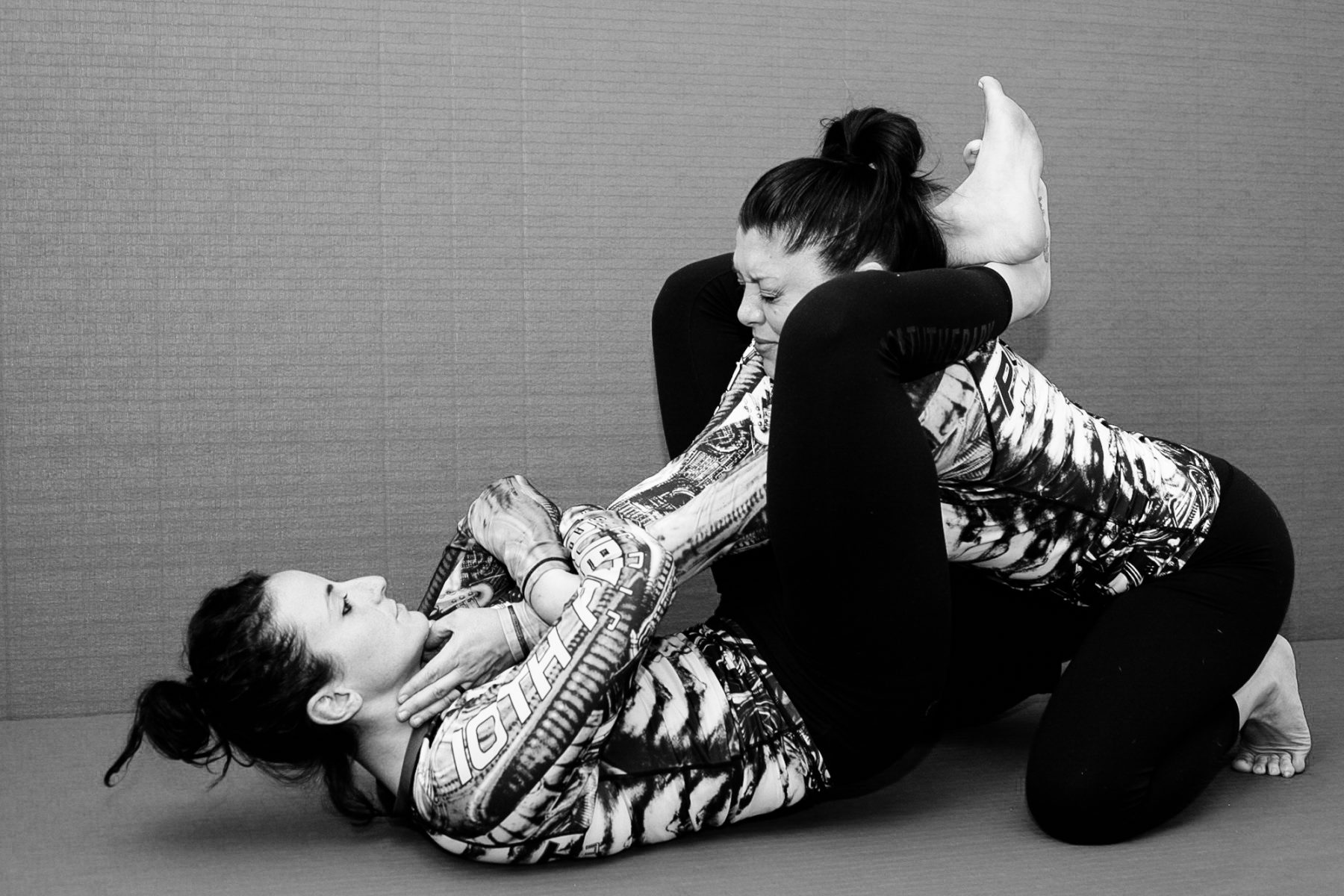
Move No. 2: The Triangle Choke
Use the Triangle Choke in a worst-case-scenario when on your back with your attacker pinning you down.
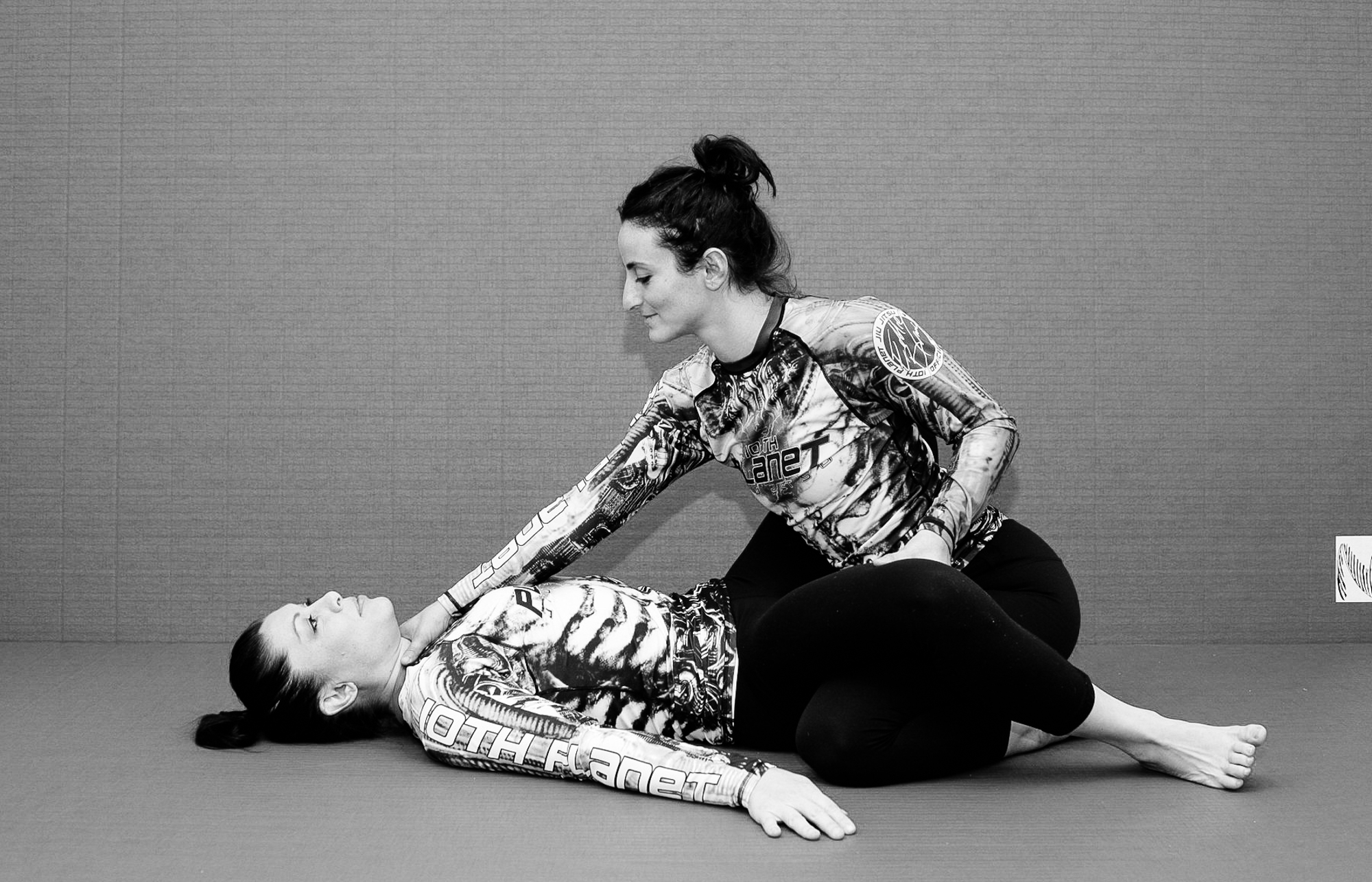
Step 1: Engaging your core muscles sit up slightly, isolating your opponent’s wrist with one hand, maneuvering their arm through your legs. With your free hand break the posture of your opponent placing your hand on the back of their neck with heavy downward pressure.
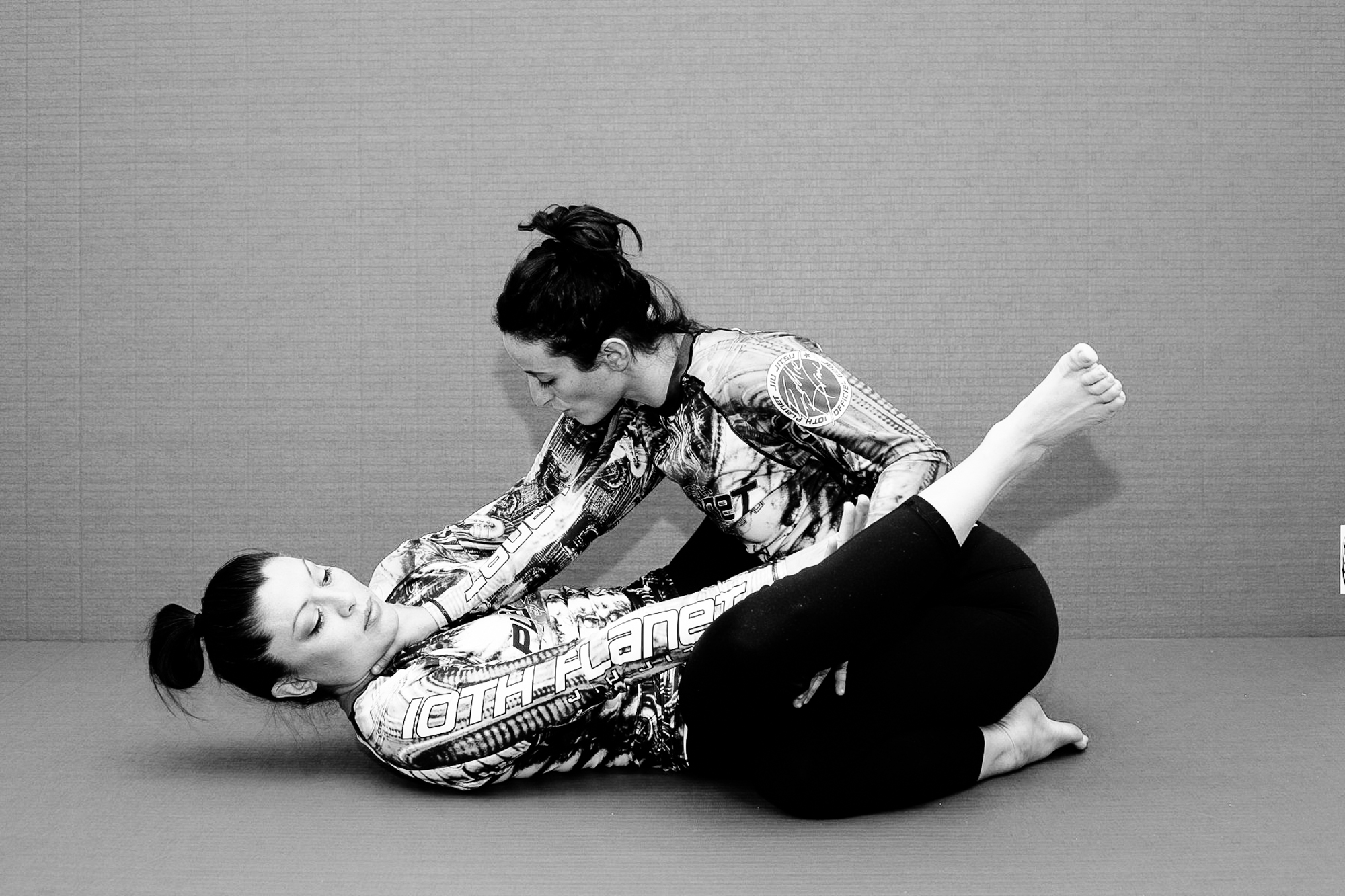
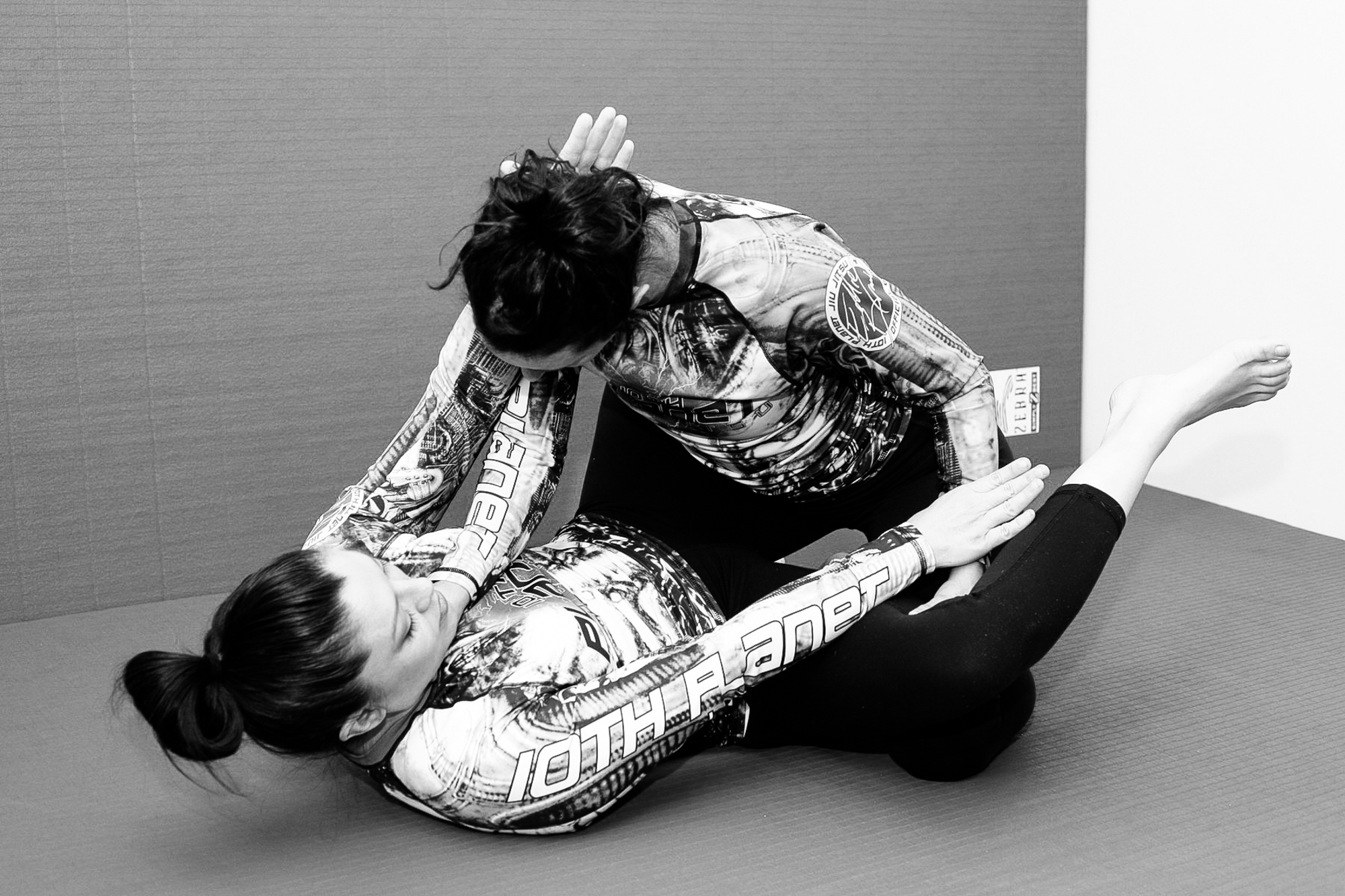
Step 2: Raise both of your legs simultaneously, clearing the shoulder line of your opponent, trapping the left arm of your opponent from outside your high open guard.
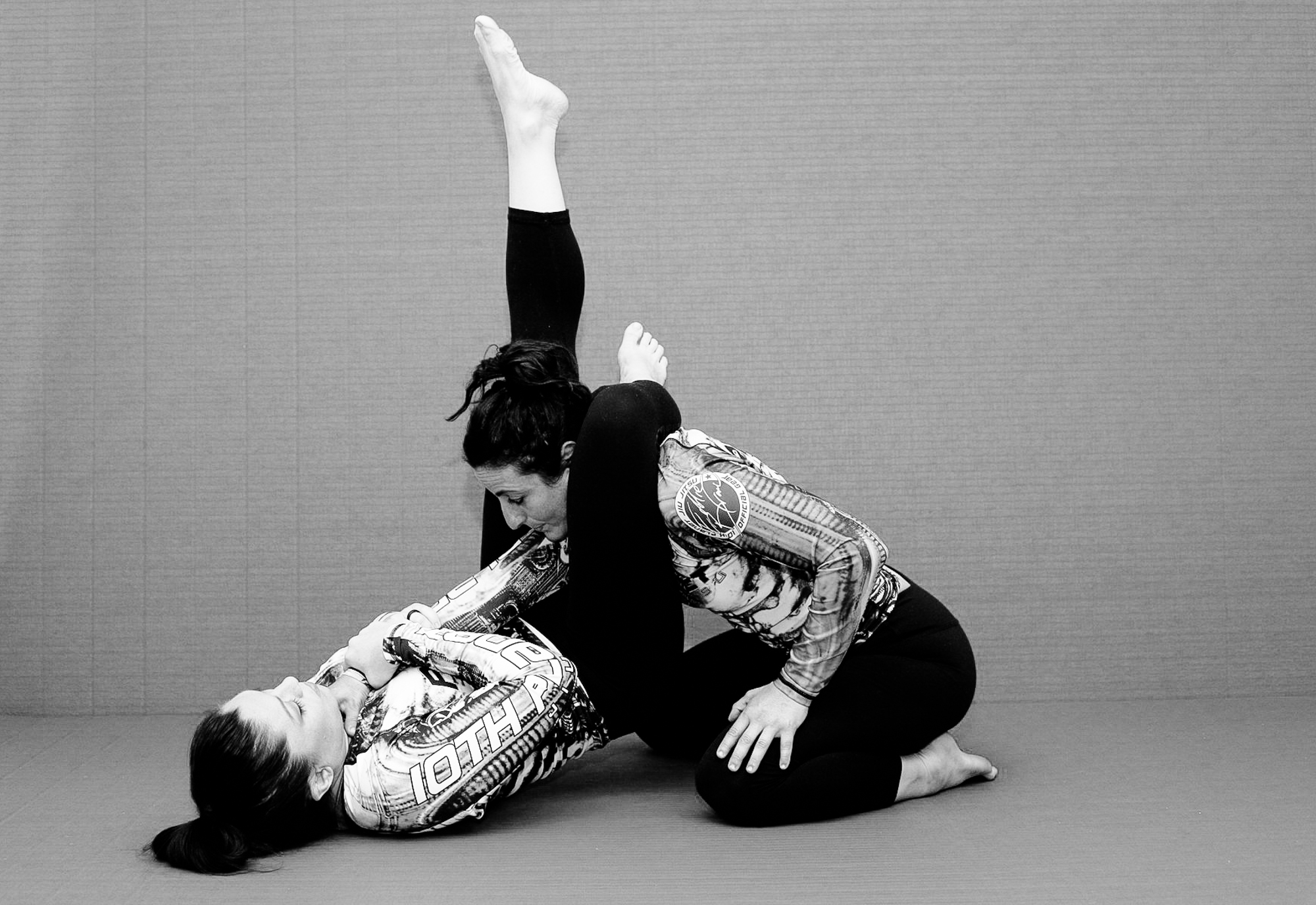
Step 3: Raising your hips off the ground in a vertical thrust upward, with your hips establish a strong downward pressure with your leg behind the neck of your opponent, keeping their posture broken, use both your hands gripping the wrist of the arm that is now trapped between your legs.
Step 4: Maintaining wrist control with one hand, reach with your other hand to secure your ankle in the pit of your knee. It is important here to remove as much space between your opponent and yourself as possible by cinching your legs as tight as you can, meanwhile maintaining downward pressure with your leg to prevent your opponent from straightening out.
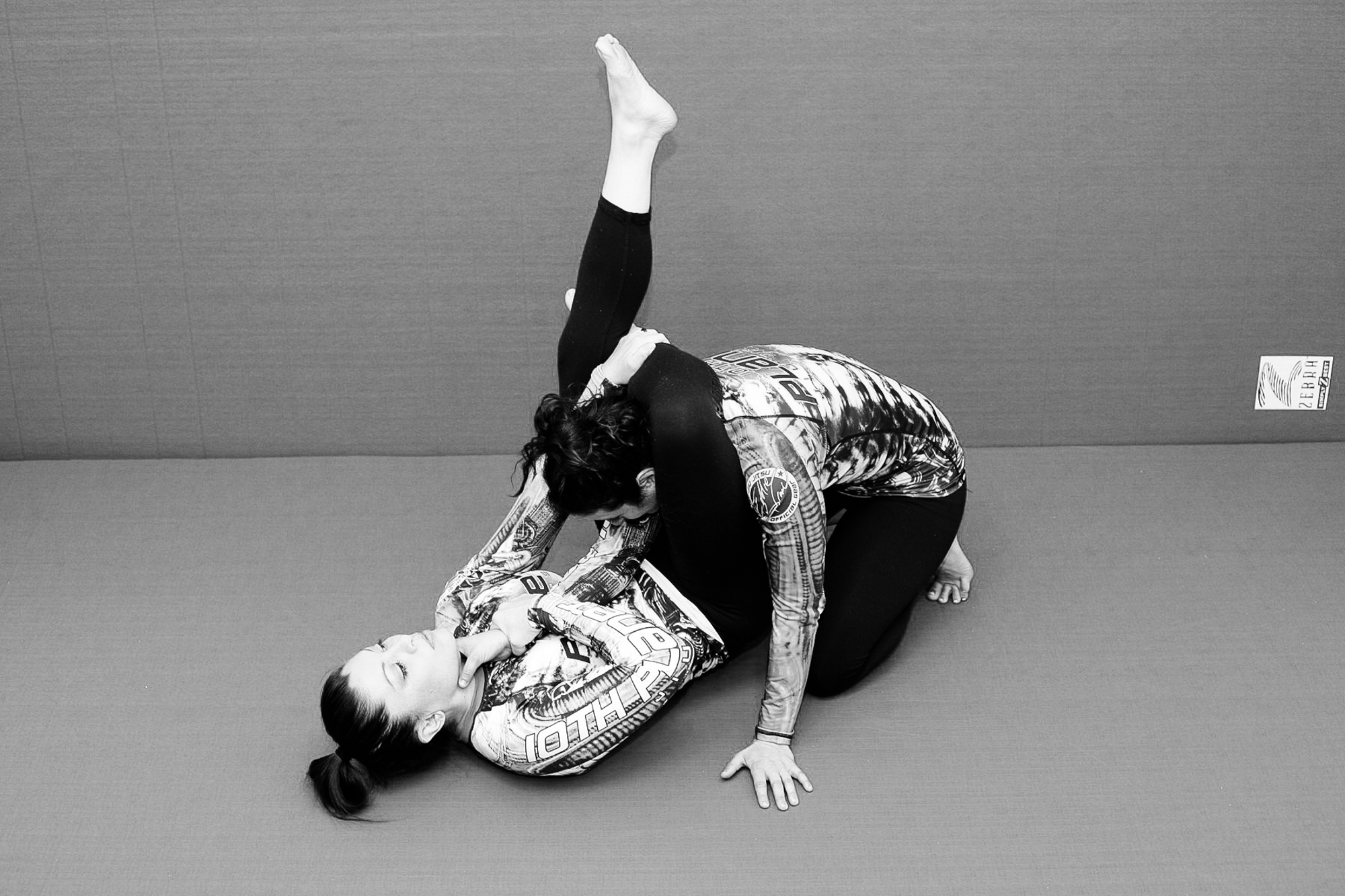
Step 5: To finish the Triangle Choke, drop your previous leg that was straight “cinching” the leg triangle tucking your toes under the rib cage of your opponent. Simultaneously, use both hands clasped behind your opponent’s neck to drive their neck into their arm while trying to touch your knees together, effectively stopping both carotid arteries in your opponent’s neck.
Applied correctly, your opponent will momentarily lose blood flow to the brain causing them to pass out in 3-5 seconds.
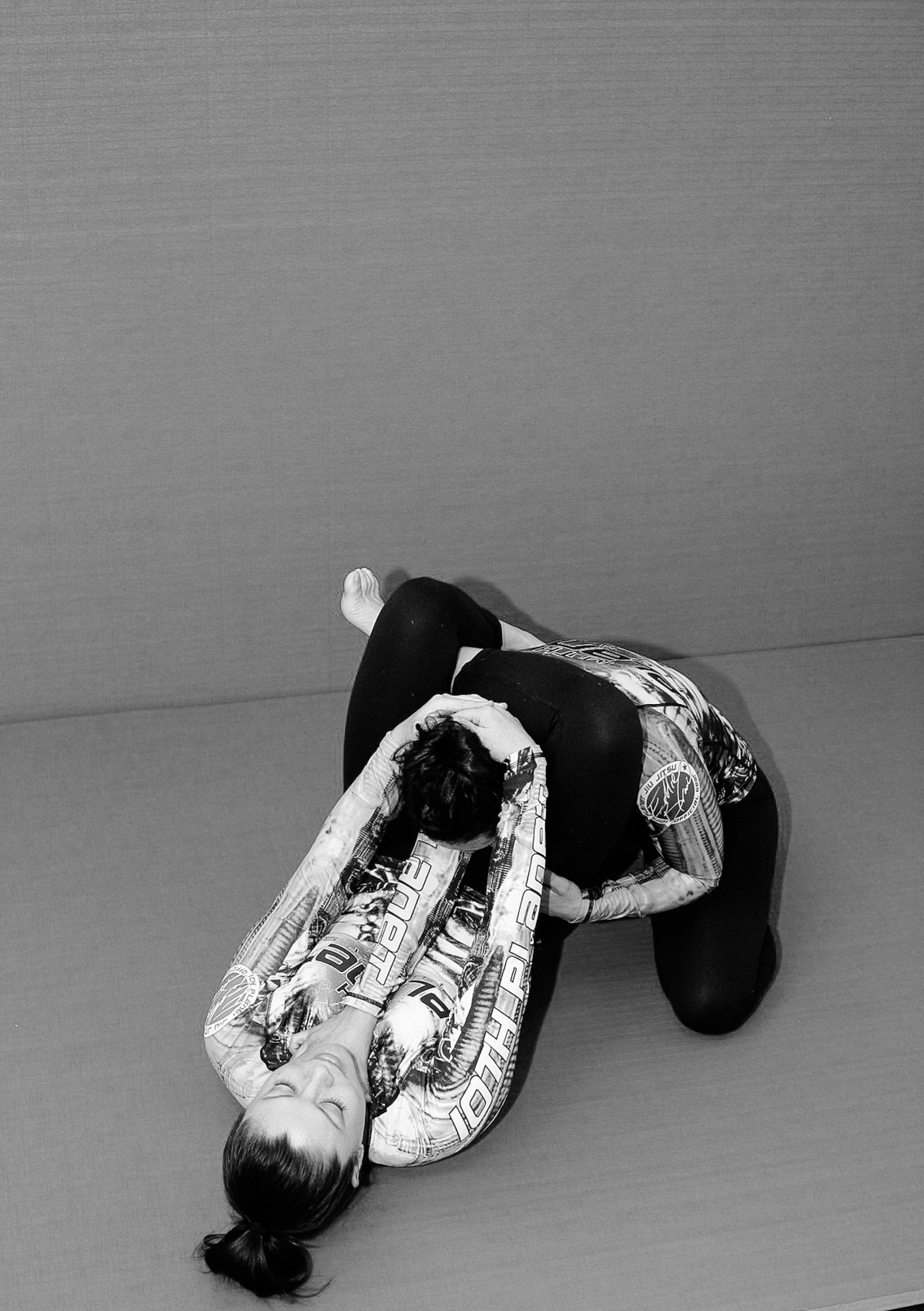
Step 6: Alternate / If you cannot secure a grip behind your opponent’s head for any reason, continue to apply the Triangle Choke while also gripping the wrist with both hands, securing your opponent’s arm to your chest with their thumb facing the sky. Simply raise your hips to hyper-extend and eventually break your opponent’s arm, effectively attacking the neck and arm in one technique.
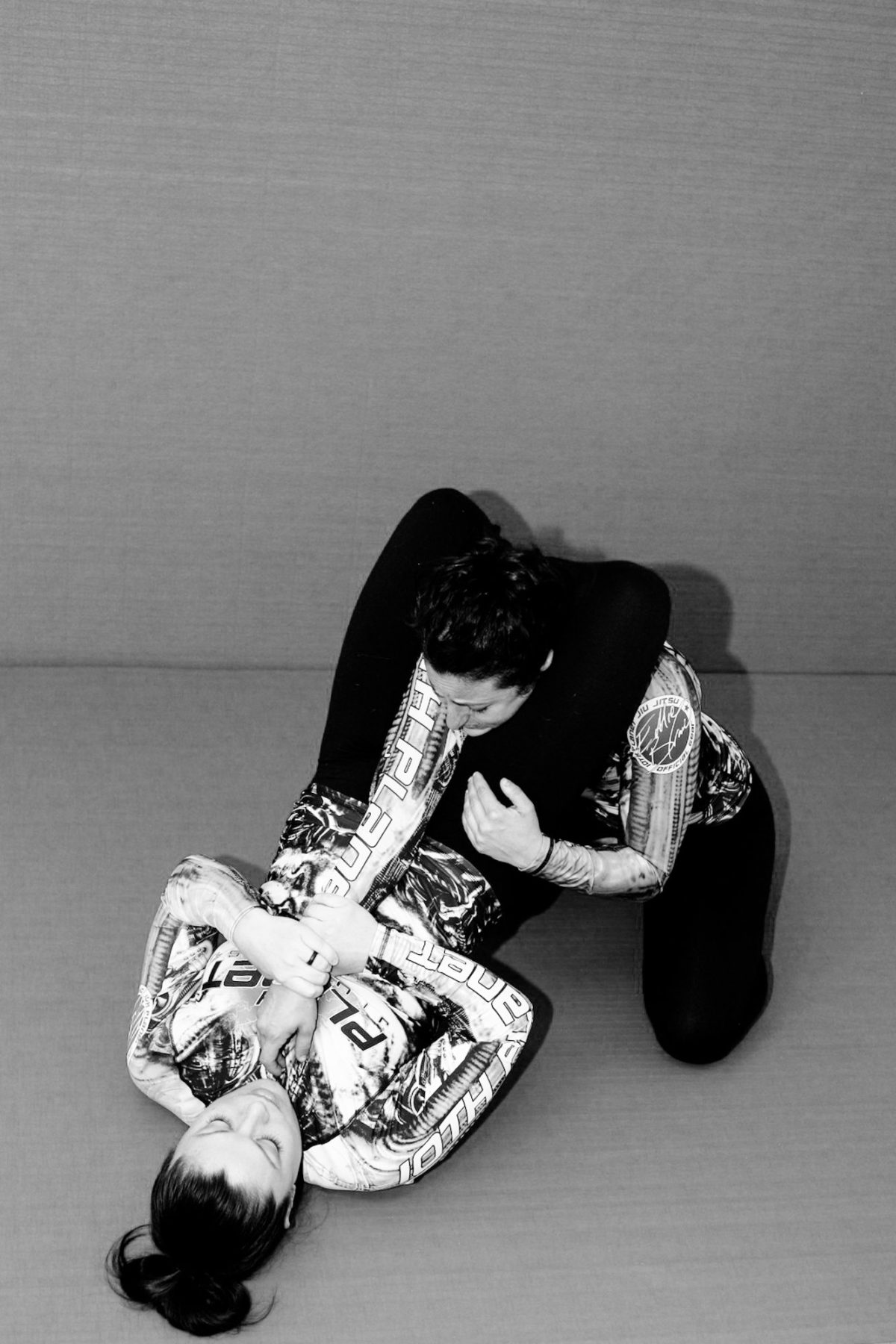
Move No. 3: The Mount Escape
Almost all violent altercations end with the attacker in a position called Full Mount. Here’s how to escape this extremely compromising position.
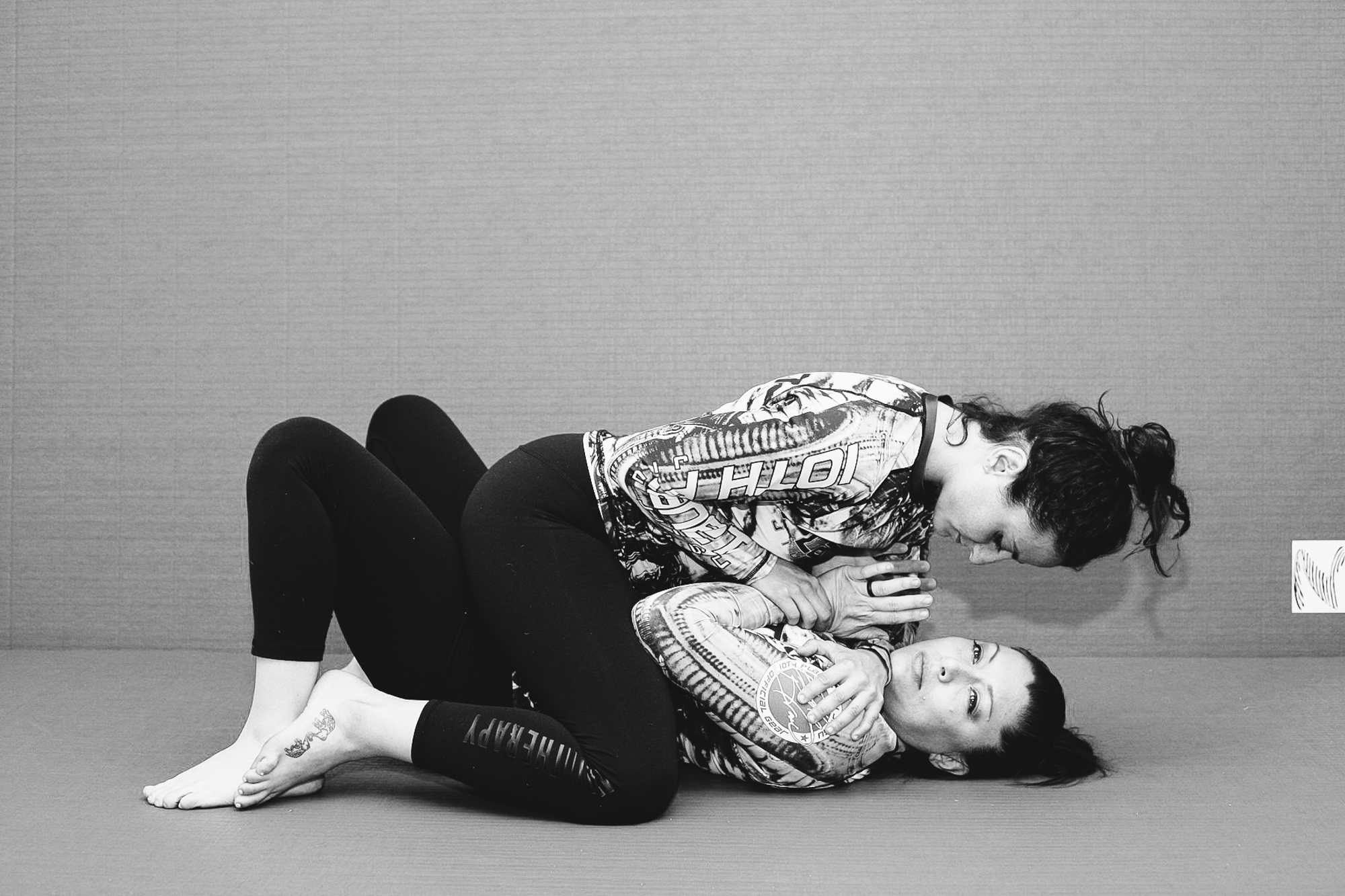
Step 1: To begin to escape from an opponent in the mounted position, it’s important to have your arms tight and in close to your chest, protecting your face if necessary. You want to position your legs as close as you can to your opponent, aligning your hipline as best you can to your opponent’s.
Step 2: Thrust your hips up, initiating a hip bump to knock your opponent off balance. This forces them to base out with their arms to keep from falling over forwards.
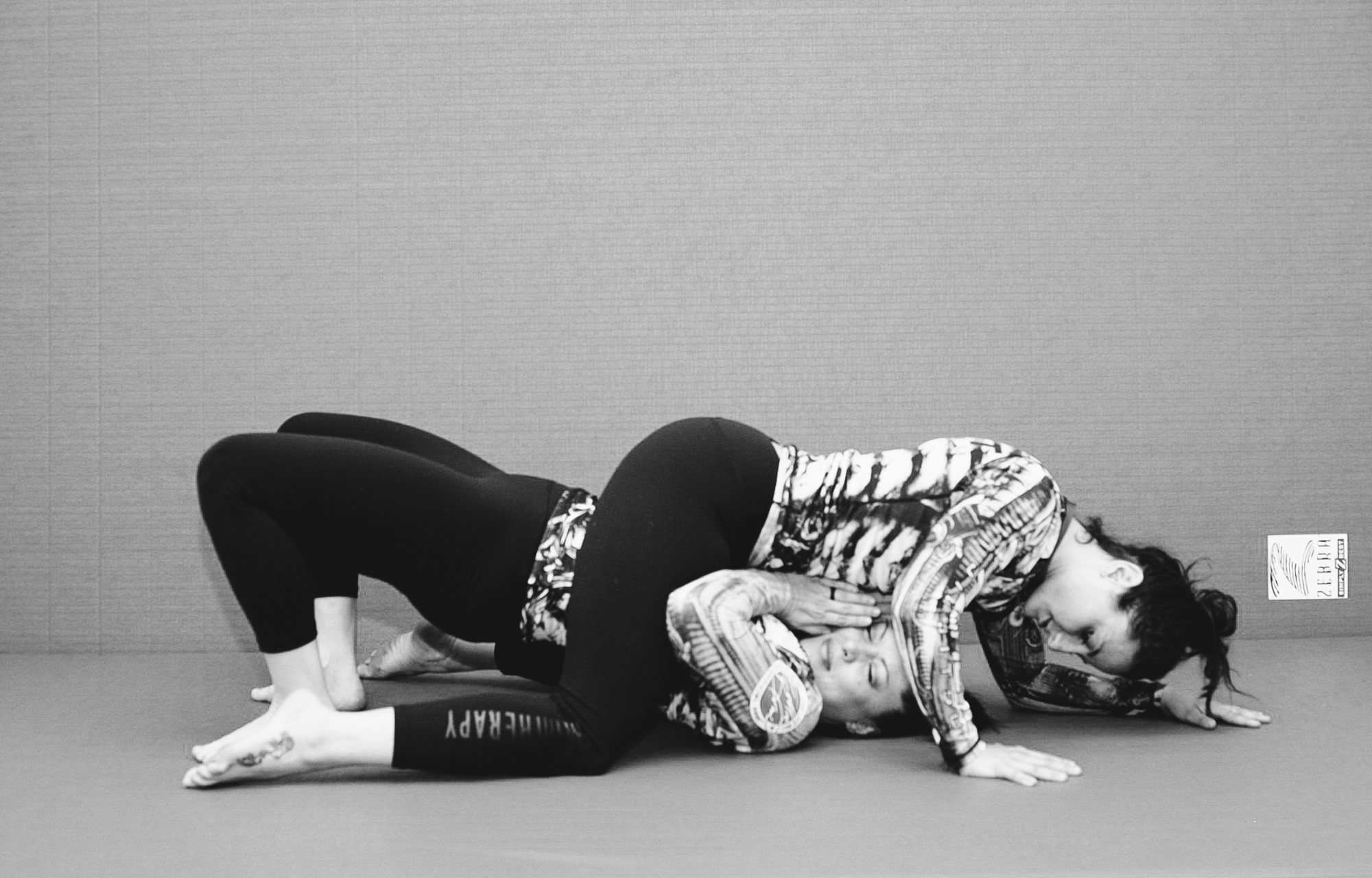
Step 3: Take advantage of the space you have created with your hip bump, turn onto your hip aligning your top arm with your opponent’s hip line creating a frame to help keep your opponent’s weight forward and off of you.
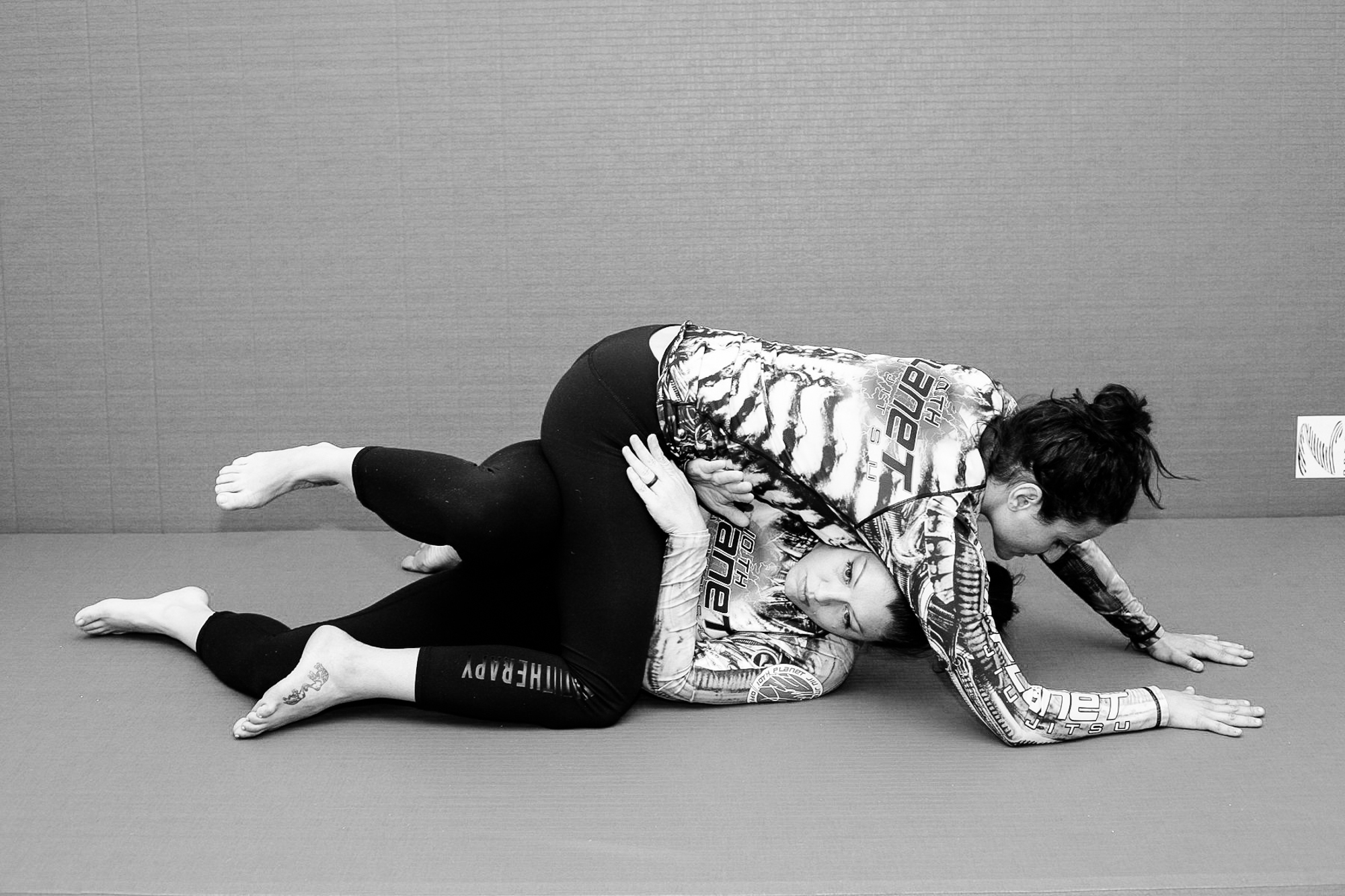
Step 4: With your top leg begin to position your foot to weave under your opponent’s ankle. Maintain a strong frame on the hipline of your opponent with your arms.
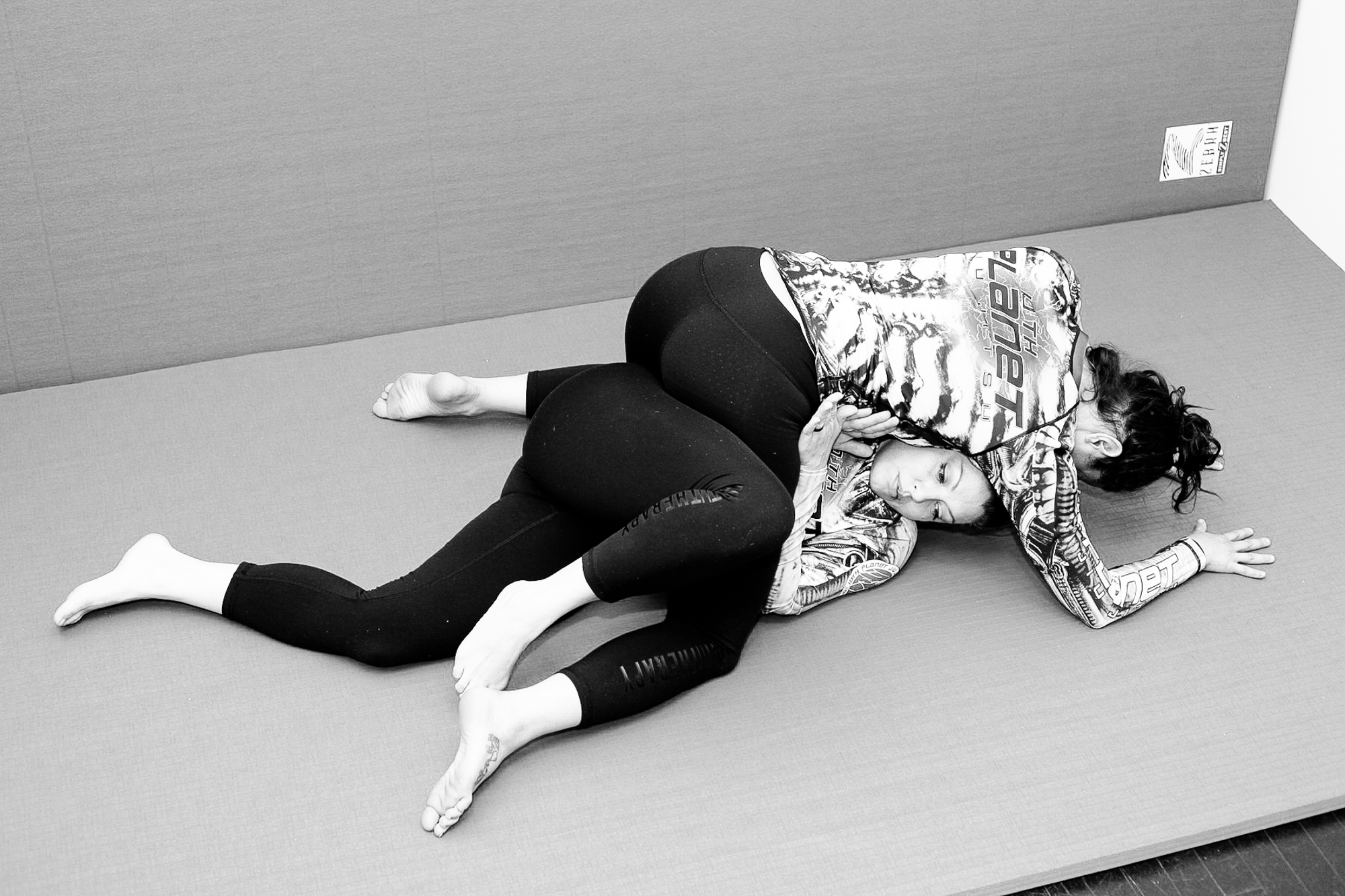
Step 5: Hook your foot in the crest of your opponent’s foot, lifting it off the ground. Continue to maintain your forearm on the hipline of your opponent as a frame.
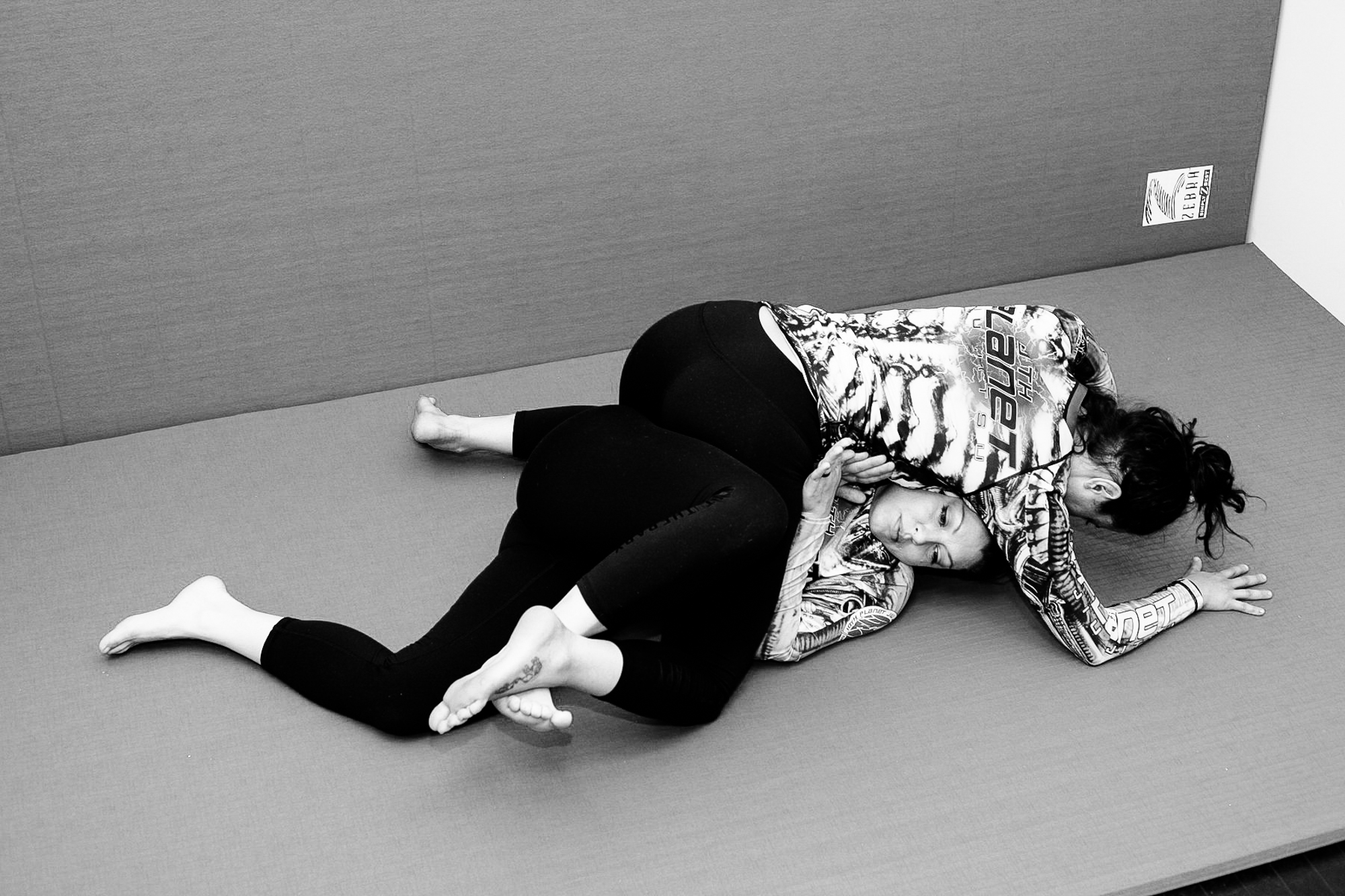
Step 6: Maintaining the frame with your top arm and beginning to lift your leg up along with your opponent’s, slide your bottom arm to your opponent’s knee to help aid the upward swing motion of your leg.
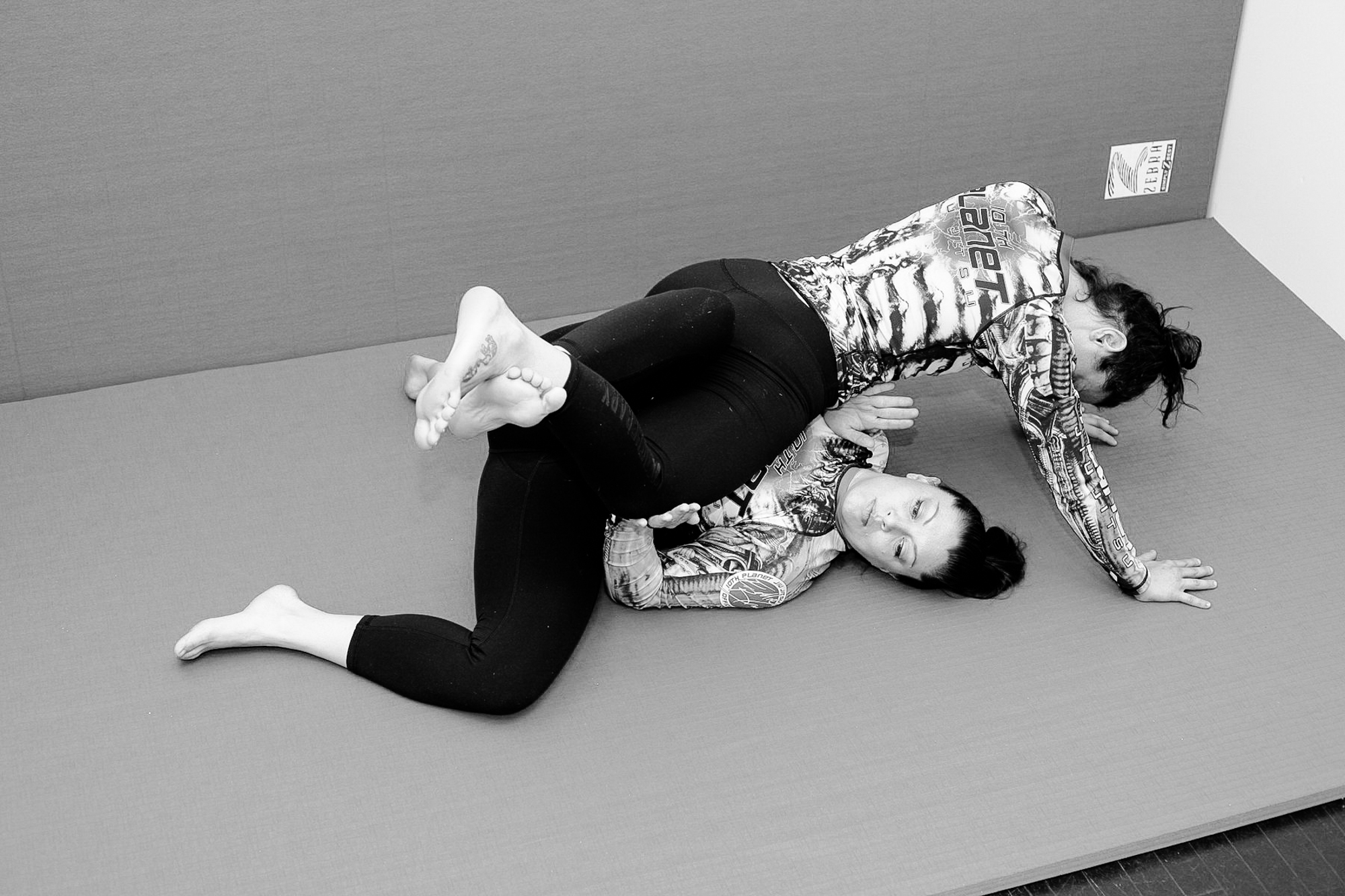
Step 7: Moving from your hip to your back, continue to frame the hipline of your opponent while your other hand forms a “c-cup” around your opponent’s knee, assisting your leg in driving your opponent up and away from you, transitioning to your opposite hip all-in-one motion.
Step 8: Once you have successfully escaped the mount position, get back to your feet while establishing distance from your opponent.
Stay tuned for more in our “Guarded” series to come later this month!
Feature Image via Beth Cath

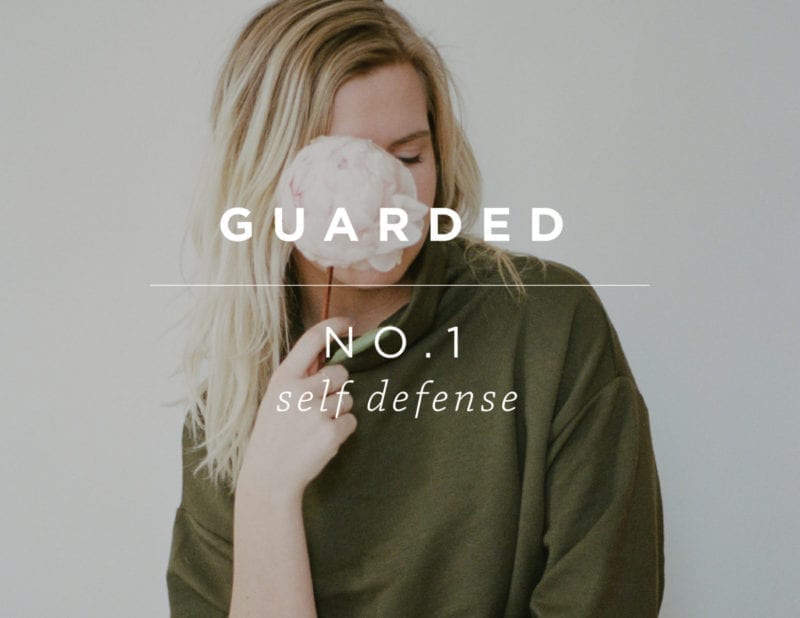










2 comments
These are good, but if you’re looking for simple and effective self defense I highly recommend checking out a Krav Maga class. It builds off your natural instincts and is designed to be learned quickly/used by smaller people. Ideal for a small woman against a larger attacker. I have been doing it for 3 months and am totally in love. Plus, it’s a great work out.
This will be a great series – never see it in blogs! Definitely an important issue to make aware of!
–
Charmaine Ng | Architecture & Lifestyle Blog
https://charmainenyw.com